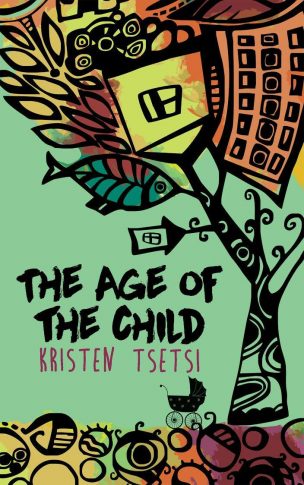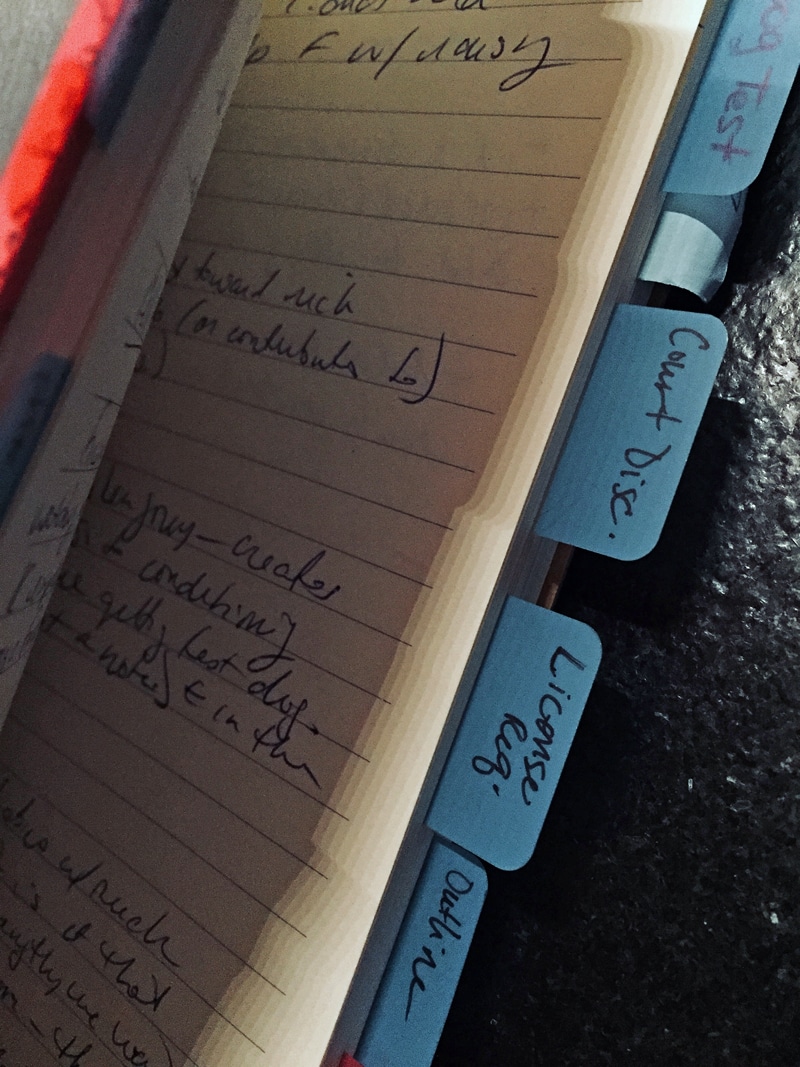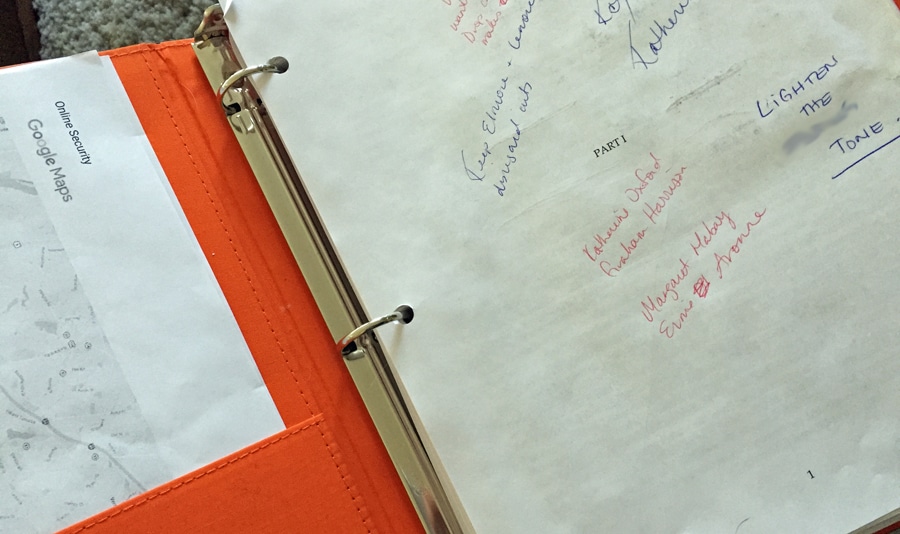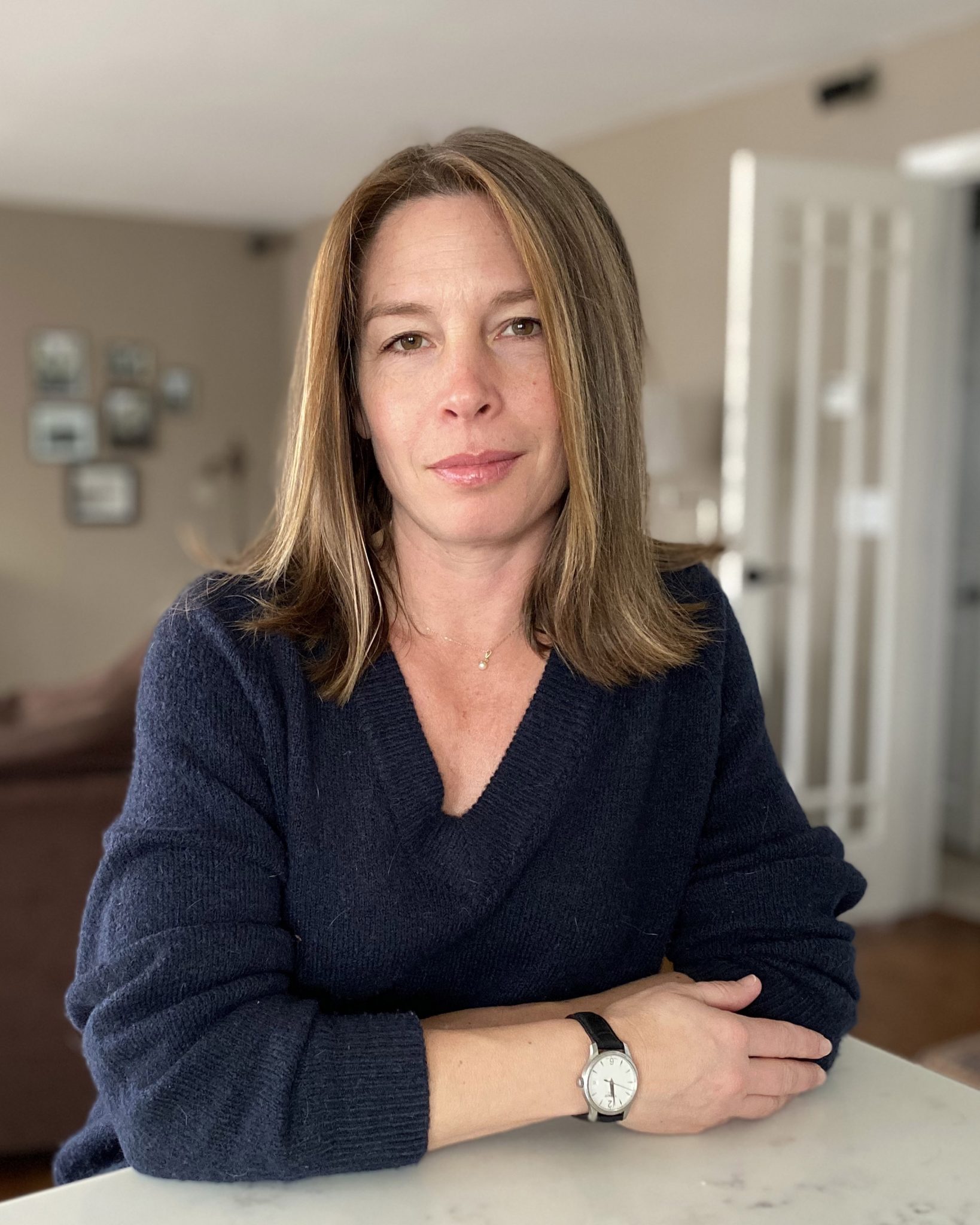Years ago, on a now-abandoned WordPress site, I made A book’s stages of growth: in pictures after having written my first novel, Homefront (Homefront later became Pretty Much True, which became Pretty Much True by Chris Jane, and yes it’s all the same story. Regerts, I have a few).

Now that The Age of the Child has been for sale for a couple of months, I wanted to write another making-of-a-book post. In part because I’m feeling the urge to start writing another novel, which has to mean I’ve already forgotten the pain of the making.
In retrospect, it all happens so fast. In retrospect, it takes months, not a year and a half, and ideas and words come with the same reliable regularity as summer fruit flies to red wine.
(I’m not complaining. I’m not “Writing is such hard worrrk!”-ing. What I am saying is that it might be nice to have a little more time before jumping back onto the trampoline of self-doubt – “My ideas are stupid. I write stupid.” – and self-congratulation-doubt – “You have to read this part I just wrote. It’s so clever. Right? No. It’s stupid, isn’t it? You can tell me.”)
 The journal. The best part of starting any new project is finding the perfect writing journal for that project. I stood in Barnes & Noble looking and looking and looking…and then, there it was. Not only was it a lovely tree, but it had the exact right number of colored flowers to represent the characters whose names I’d only recently written down. (That was about as far as I’d gotten in my concrete story plan, at that point).
The journal. The best part of starting any new project is finding the perfect writing journal for that project. I stood in Barnes & Noble looking and looking and looking…and then, there it was. Not only was it a lovely tree, but it had the exact right number of colored flowers to represent the characters whose names I’d only recently written down. (That was about as far as I’d gotten in my concrete story plan, at that point).
Not only did it have the correct number of standout blooms, but they were separated while connected, as they are in The Age of the Child (Katherine and Margaret dominate Part I, and Millie and Lenny dominate Part II, with Hugh and Floyd as their respective romantic interests).

Usually, I’ll only use about 1/3 of any writing journal (and no, the rest of the unused pages can’t be used for the next project, and yes, that’s wasteful), but this one – while still containing blank, unused pages – got more use than any of the others. I’d never had to keep so much information straight, before.
My organizational skills were still somewhat lacking. For example, the blue tab that comes after “Licensing Req.” (where all the parent licensing guidelines were jotted down) says “Outline.”
That section saw very little ink.
________
The binder. This comes after the first draft is complete. Print and hole-punch and see it in tangible form – encouraging!

“It’s real. All those words are there and I wrote them and the last page says ‘the end.'”
It’s fun to sit with the binder over a glass of wine and some salted pistachio nuts, but the real reason for printing it is that reading a single page on the screen is an entirely different experience from reading it in a binder.
Note: The printed Google maps in the folder sleeve plot the fictional towns of Tinytown (whose Main Street sees everything from little kids wearing “Free to a good home” signs to Millie skulking around in a wig and sunglasses), Windbury (many unwilling parents flock here), Newchester (Katherine and Graham live/love/ “other” here), and the Forest Retreat Estates neighborhood (where Katherine’s friend Margaret lives, and where Lenny puts the basement to illegal use).

This second binder image is intentionally blurred. I’ll subject only my closest friends, who I must hate, to my early draft writing.
What you can see, however, is that there are no marks on these two pages. What hey! None of it needed editing!
Oh, how wonderful to discover two single-spaced pages of flawless writing – and in the FIRST DRAFT? – in a row…
________
 Printed book-shaped book. It’s important (for me, anyway), after getting through the binder and then making all the binder changes to the Word (or other text) document, to format the newly revised draft to meet the template requirements for a paperback copy.
Printed book-shaped book. It’s important (for me, anyway), after getting through the binder and then making all the binder changes to the Word (or other text) document, to format the newly revised draft to meet the template requirements for a paperback copy.
For some reason, this additional change in format reveals even more problems (so many more problems) than does the binder format.
 These two pages of “So, everything here sucks, I guess” are the same two pages from the binder image above that received no initial cross-outs, no circles, no notes, nothing.
These two pages of “So, everything here sucks, I guess” are the same two pages from the binder image above that received no initial cross-outs, no circles, no notes, nothing.
Suddenly, in book form, every single thing wrong with those pages became sickeningly obvious.
(I think these pages were in such bad shape that I had to write additional notes on a little sheet of spiral notebook paper, tuck it into position in the seam, and draw arrows to the paragraphs where new text belonged.)
The fun of this stage is that it’s the almost-finished stage. After these changes are made, another book-shaped-book gets printed, last little things are changed, and it’s done!
So you print that copy just to have one for yourself, look through it, find a glaring problem or two, fix them, and THEN it’s done until you find more problems. There are only a few, maybe five, before it’s definitely finished (unless you’re a perfectionist artist of the highest order who believes art is NEVER FINISHED, which I am not).
Looking back, the thought of starting over is a little more than intimidating. I’m happy to find I’ve succeeded in convincing myself I’m not quite ready for that, yet. But don’t let that discourage YOU from starting your first, or your next. It’s really all very rewarding. (That’s the thing to say, right?)
No, it is. Really.

Kristen Tsetsi is the author of the post-Roe v. Wade novel The Age of the Child, called “scathing social commentary” and “a novel for right now.” She is also the author of the novels The Year of Dan Palace and Pretty Much True (studied in Dr. Owen W. Gilman, Jr.’s The Hell of War Comes Home: Imaginative Texts from the Conflicts in Afghanistan and Iraq). Kristen’s interview series at JaneFriedman.com offers behind-the-scenes insights into all things writing and publishing.



